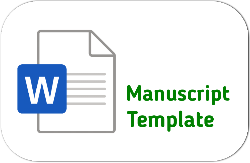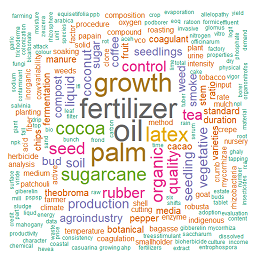Respons Viabilitas Benih Kopi Arabica (Coffea arabica) terhadap Pelumuran Jamur Trichoderma viride di Pre-nursery
DOI:
https://doi.org/10.25181/jaip.v6i1.656Abstract
Indonesia is the fourth largest coffee producing country in the world after Brazil, Vietnam, and Colombia. This study aims to obtain an optimal rate of Trichoderma viride on coffee seed viability, to obtain the highest growth of Arabica coffee clones, and to obtain interaction between rate of Trichoderma viride and Arabica coffee clones on viability of coffee seeds. The research was conducted in Nursery Farm, State Polytechnic of Lampung from October to December 2016. This research use Factorial Randomized Block Design (RBD). The first factor was the Arabica coffee clone i.e. Sigarar Utang clone and S 795 clone.The second factor was the rate of Trichoderma viride fungi culture i.e.O0 (without Trichoderma viride fungi culture), O1 (100 g Trichoderma viride fungi culture), O2 (200 g of Trichoderma viride fungi culture), O3 (300 g of Trichoderma viride fungi culture). The variables observed included seed growth rate, germination rate, cotyledon rupture rate, hypocotyl height, hypocotyl diameter, normal sprouts, leaf area, root dry weight, and leaf dry weight. If there is a significant difference in α 0,05, then the test is continue with the LeastSignificanceDifference test (LSD). The best treatment of Trichoderma viride fungi dosage was dosage 200 g can increase seed growth rate for 12 days, germination rate 80,28%, and hypocotyl height 7,15 cm.The highest clonal treatment in the Sigarar Debt clone can increase the height of hypocotyl of 7,15 cm and the leaf area of 14.39 cm2.  Keywords: Arabica coffee seed, Trichoderma viride fungi culture, seed growth rateDownloads
References
Aklimawati, L., Sumarno, D., & Mawardi, S. (2015). Effect of service quality on coffee based economic cluster development on farmers and other stakeholders satisfaction in Bondowoso District. Pelita Perkebunan, 31(1), 59-72.
Asaduzzaman, M., Alam, M. J., & Islam, M. M. (2013). Effect of Trichoderma on seed germination and seedling parameters of chili. Journal of Science Foundation, 8(1-2), 141-150.
Aulia, R., Rosmayati, R., & Bayu, E. S. (2014). Respon pertumbuhan dan produksi beberapa varietas kedelai hitam (Glycine max L.) berdasarkan ukuran biji. Agroekoteknologi, 2(4), 1324-1331.
Baso, R. L., & Anindita, R. (2018). Analisis daya saing kopi Indonesia. Jurnal Ekonomi Pertanian dan Agribisnis, 2(1), 1-9.
Chamzurni, T., Sriwati, R., & Rahel, R. (2011). Efektivitas dosis dan waktu aplikasi Trichoderma virens terhadap serangan Sclerotium rolfsii pada kedelai. Jurnal Floratek, 6(1), 62-73.
Hanafiah, K. A., Anas, I., Napoleon, A., & Ghoffar, N. (2005). Biologi tanah: Ekologi dan Makrobiologi Tanah. Jakarta: Raja Grafindo Persada.
Mulsanti, I. W., Wahyuni, S., & Sembiring, H. (2014). Hasil padi dari empat kelas benih yang berbeda. Jurnal Penelitian Pertanian Tanaman Pangan, 33(3).
Novariza, D. A., Lubis, L., Sitepu, S. F., & Tistama, R. (2015). Exploration and characterization of microorganisms from rubber seed and the benefits for rubber plant growth (Hevea brasiliensis Muell. Arg.). Agroekoteknologi, 4(1), 1925-1936.
Nugroho, K. W., & Yuliasmara, F. (2012). Penggunaan metode scanning untuk pengukuran luas daun kakao. Warta Pusat Penelitian Kopi dan Kakao Indonesia, 24(1), 5-8.
Nurahmi, E., Susanna, S., & Sriwati, R. (2012). Pengaruh Trichoderma terhadap perkecambahan dan pertumbuhan bibit kakao, tomat, dan kedelai. Jurnal Floratek, 7(1), 57-65.
Pertiwi, N. M., Tahir, M., & Same, M. (2016). Respons pertumbuhan benih kopi robusta terhadap waktu perendaman dan konsentrasi giberelin (GA3). Jurnal Agro Industri Perkebunan, 4(1), 1-11.
PKPLN [Pusat Kebijakan Perdagangan Luar Negeri]. (2014). Analisis Komoditas Kopi dan Karet Indonesia: Evaluasi Kinerja Produksi, Ekspor dan Manfaat Keikutsertaan dalam Asosiasi Komoditas Internasional. Jakarta: Badan Pengkajian Dan Pengembangan Kebijakan Perdagangan Kementerian Perdagangan.
Pratama, R. E., Mardhiansyah, M., & Oktorini, Y. (2015). Waktu potensial aplikasi mikoriza dan Trichoderma spp. untuk meningkatkan pertumbuhan semai Acacia mangium. Jurnal Online Mahasiswa (JOM) Bidang Pertanian, 2(1), 1-11.
Richards, B. N. (1994). The Microbiology of Terrestrial Ecosystems. Singapura: Longman Singapura Publisher Ltd.
Rozen, N., & Sutoyo, C. (2012). Pematahan dormansi benih aren (Arenga pinnata) dengan pelumuran kulit benih pada suspensi Trichoderma. Jurnal Jerami, 4(3), 162-168.
Saputri, E., Lisnawita, L., & Pinem, M. I. (2015). Enkapsulasi beberapa jenis Trichoderma sp. pada benih kedelai untuk mengendalikan penyakit Sclerotium rolfsii Sacc. Agroekoteknologi, 3(3), 1123-1131.
Downloads
Published
How to Cite
Issue
Section
License
Authors who publish with Jurnal Agro Industri Perkebunan agree to the following terms:
Authors retain copyright and grant the Jurnal Agro Industri Perkebunan right of first publication with the work simultaneously licensed under a Creative Commons Attribution License (CC BY-SA 4.0) that allows others to share (copy and redistribute the material in any medium or format) and adapt (remix, transform, and build upon the material for any purpose, even commercially) with an acknowledgment of the work's authorship and initial publication in Jurnal Agro Industri Perkebunan.
Authors are able to enter into separate, additional contractual arrangements for the non-exclusive distribution of the journal's published version of the work (e.g., post it to an institutional repository or publish it in a book), with an acknowledgment of its initial publication in Jurnal Agro Industri Perkebunan. Authors are permitted and encouraged to post their work online (e.g., in institutional repositories or on their website) prior to and during the submission process, as it can lead to productive exchanges, as well as earlier and greater citation of published work.


























